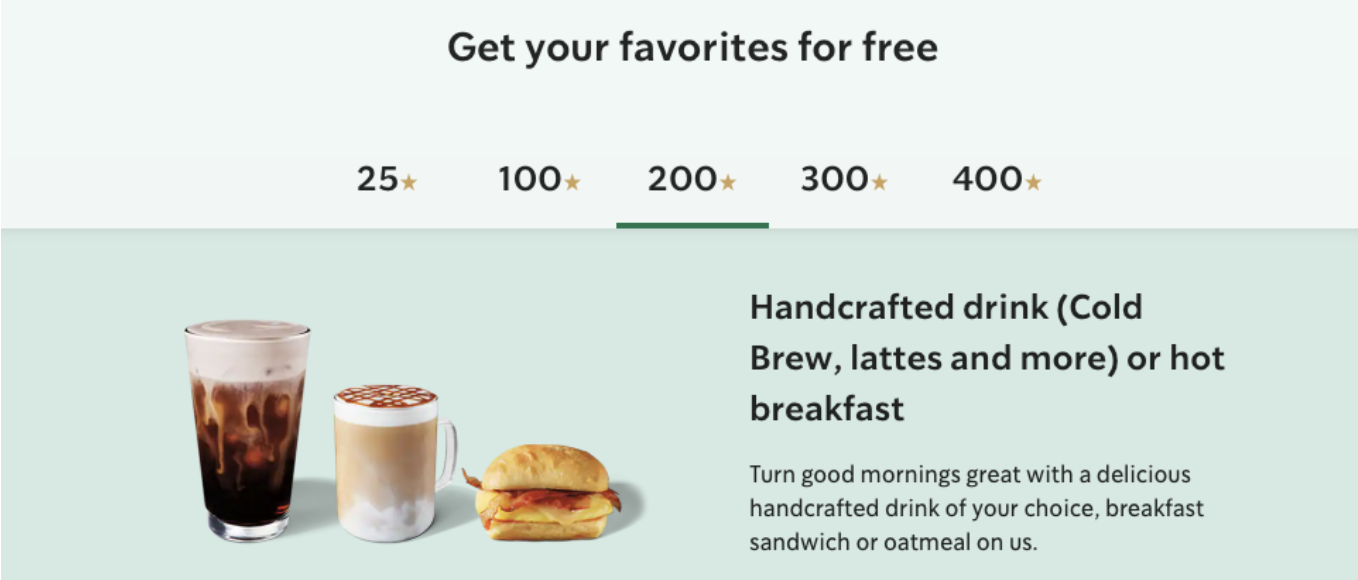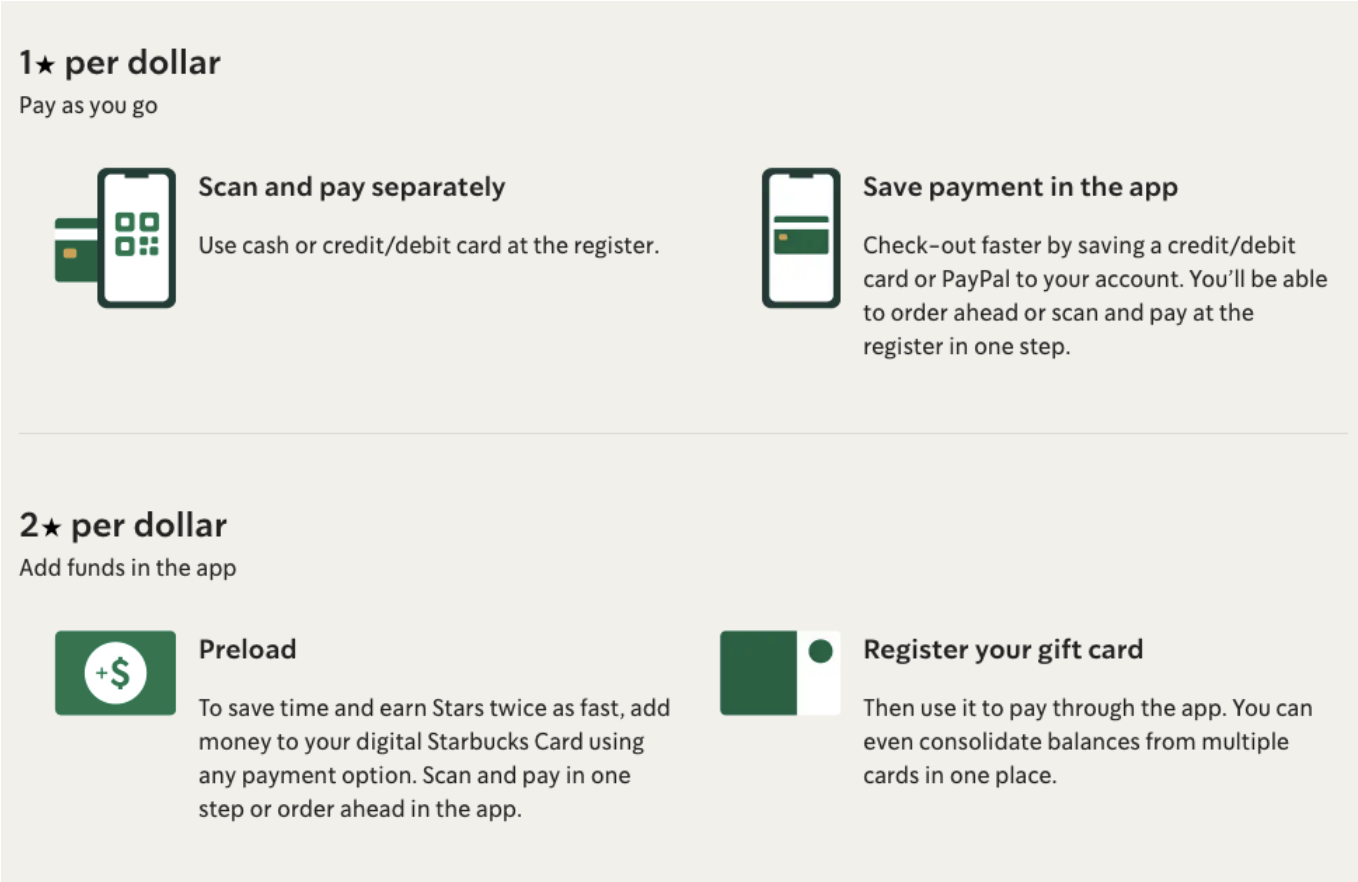It’s safe to say that Starbucks is a leader in retail customer experience. But its loyalty app - Starbucks Rewards - is no slouch either. Considered a best-in-class loyalty experience, in 2022 interim CEO Howard Schultz shared that Starbucks Rewards drove a whopping 53% of Starbucks U.S. revenue.
But how did Starbucks Rewards become the king of loyalty programs?
Unsurprisingly there’s some marketing psychology and behavioral science at play:
What Makes Starbucks Rewards Addictive
The Habit Loop describes the neurological patterns that govern routines, and was coined in the 1990s by researchers from MIT (Massachusetts Institute of Technology)
The loop consists of three parts:
- The trigger (or cue): These are signals to our unconscious minds that it’s time to perform our habit.
- The routine: This is the habit or behavior itself.
- The reward: This is the payoff you get from performing your habit.
What is loyalty if not the habit of shopping with your brand? (In fact, most of the latest research on customer loyalty finds that it isn’t really loyalty driving repeat purchase so much as habit).
To create a habit, all three elements of the Habit Loop need to be firing.
Here’s how Starbucks Rewards does it:
How Starbucks Rewards uses the Habit Loop (knowingly or not):
Triggers:
1. Push Notifications Remind Users To "Think Starbucks":
This morning I checked my phone to find a push notification from Starbucks Rewards that read “Exclusive early access to Summer.” When I clicked it I saw that new drinks had arrived, including the Mango Dragonfruit Refresha (I’m saving that one for when it’s a little warmer than 52 degrees in the UK).
2. Special Events Keep Users Interested:
Starbucks knows that it needs reasons to get people to open the app and order a drink, so they run special events like Double Star Days (when your purchases earn you 2x the rewards points) and Bonus Star Challenges (when certain purchases will net more rewards points - aka stars).
3. Morning Caffeine Fixes Trigger (without the app):
And last, there is a trigger that Starbucks Rewards doesn’t fire, but that it benefits from just the same: The grogginess of waking up that many people fix with coffee.
Routine:
The Starbucks Rewards UX makes using the app simple, valuable, and meaningful for customers:
1. Personalized Experience:
Behavioral Science tells us that Personalization is a powerful tool to capture user attention and interest. From a personalized home page (“Good afternoon Jennifer”) to an experience that makes saving and recording your favorites a breeze, Starbucks Rewards makes its experience as personalized as possible.
2. Gamification Drives Engagement:
Users don’t just earn stars (rewards points), they can also move from the Green to Gold rewards tier once they earn 450 stars in one year. Gold status members get even more rewards - like free extra shots of espresso, syrups and whipped cream.

Rewards:
1. Stars Translate to Free Stuff:
At its most basic, Starbucks Rewards is a points-based loyalty program. It gives you points (stars) to spend on whatever you want, and the more you buy at Starbucks the more free things you get. It sounds almost too basic, but Starbucks get right what too many brands get wrong - they have a simple proposition that customers value.
🚀 Learn what makes buyers tick
Join 8k+ of world's best marketers from brands like Disney, Coca-Cola, Google who are learning marketing psychology in <5 mins a week.
2. Rewarding “Good” Behaviors:
You can earn more points depending on how and when you use your card. For example, if you load your Starbucks Reward app with cash instead of paying with a debit or credit card, you earn 2x the rewards.
This probably doesn’t matter as much to users, but to Starbucks this behavior makes a big difference to its bottom line is partially why - believe it or not - Starbucks is one of the biggest “banks” in the United States based on the amount of customers' money it holds via the Starbucks Rewards app.

3. A Variety of Rewards Gives Users Control:
When the program first launched, users could only trade in stars for drinks. But as it’s evolved, the rewards have evolved as well. Customers can now use stars to get food, coffee beans, and merchandise. U.S.-based users can also earn airline miles from their purchases through a partnership between Starbucks and Delta Airlines. By offering so many rewards options, Starbucks is giving customers control over their rewards - or, autonomy as psychologists would call it.

The Bottom Line
As one of most used and most financially successful loyalty apps in the world, Starbucks Rewards has proven that a simple experience - driven by marketing psychology and behavioral science - can create brand preference, affection, and engagement.
Using the principles of the Habit Loop - knowingly or not - has made Starbucks a daily habit for many customers, and they’ve reaped billions of dollars in additional customer spend.
